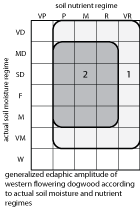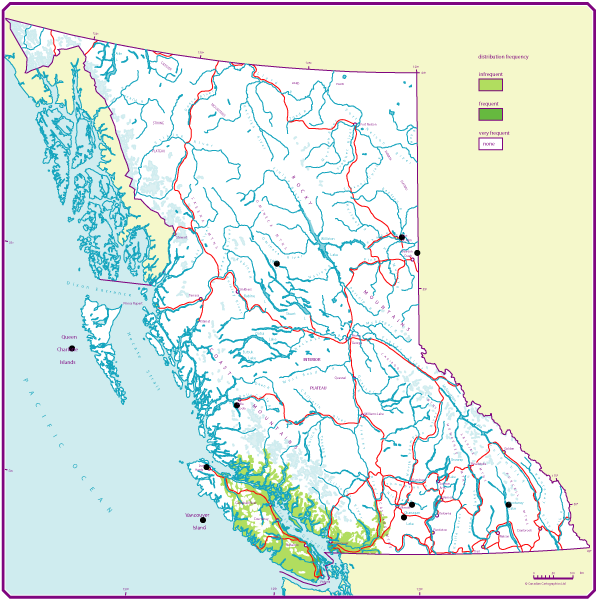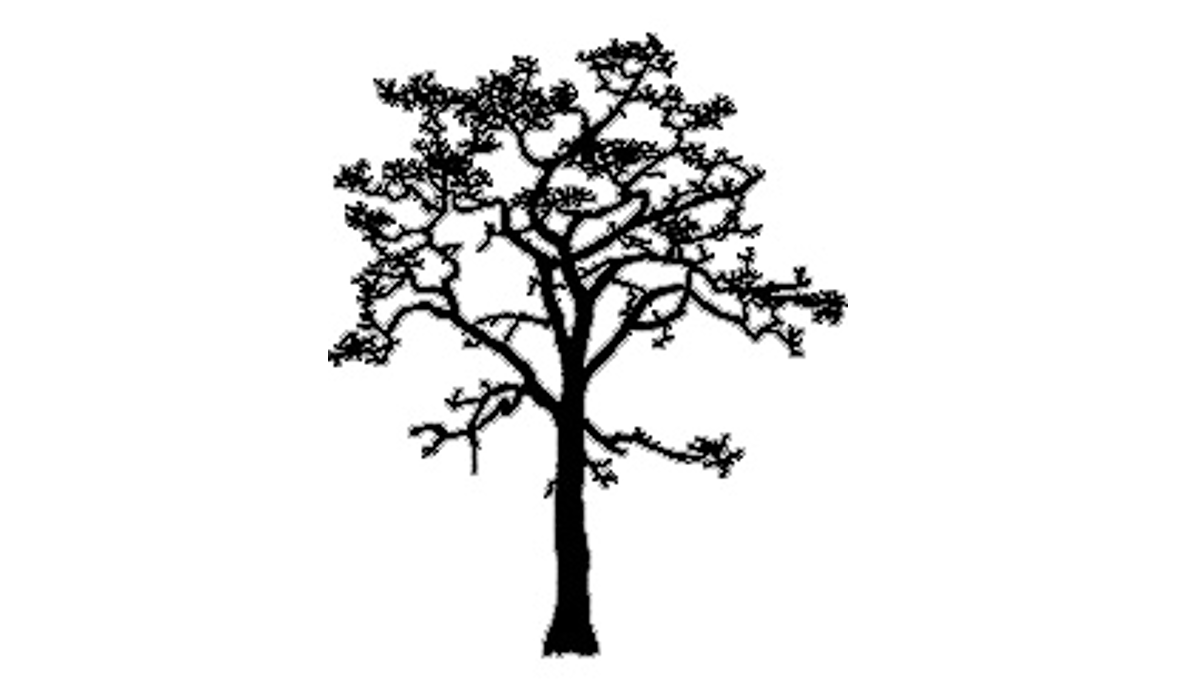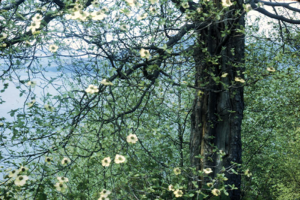Western flowering dogwood
Western flowering dogwood (Gp) - Cornus nuttallii
Western flowering dogwood is a small- to medium-sized (<25m tall), deciduous broad-leaved tree, at maturity with a narrow short crown, many horizontally spreading branches, straight, slightly tapered stem, and thin, light gray bark, becoming finely ridged with age.
Western flowering dogwood is not grown for timber production and wood collection is prohibited by law in B.C.
On this page
- Geographic range and amplitudes
- Tolerances and damaging agents
- Silvical characteristics
- Genetics and notes
Geographic range and amplitudes
Geographic range
Geographic element:
Western North American/mainly Pacific and less Cordilleran
Distribution in western North America:
central and south in the Pacific region; central and south in the Cordilleran region
Ecological amplitudes
Climatic amplitude:
cool and warm temperate - cool and warm mesothermal
Orographic amplitude:
submontane - (montane)
Occurrence in biogeoclimatic zones:
(subcontinental IDF), CDF, (southern CWH)
Edaphic amplitude

Range of soil moisture regimes:
(very dry) - moderately dry - slightly dry - fresh - moist - (very moist)
Range of soil nutrient regimes:
poor - medium - rich - (very rich)
Tolerances and damaging agents
Root system characteristics
Western flowering dogwood has a deep root system, occasionally with a taproot.
| Tolerance to | Tolerance class | Comments |
|---|---|---|
| low light | M | seedlings and saplings are frequent in semi-open canopy stands |
| frost | L | not a concern in cool mesothermal climates |
| heat | M | frequent on insolated colluvial slopes |
| water deficit | M | frequent water-deficient sites |
| water surplus | M | tolerates short-term flooding |
| nutrient (mainly N) deficiency | M |
absent in acid, very poor soils |
Associated tree species and successional role
In British Columbia, western flowering dogwood grows scattered in early and intermediate stages of secondary succession, usually mixed with softwoods or hardwoods on disturbed, colluvial sites. It may be a pioneer species in primary succession on fragmental and skeletal slopes, and is often present but never abundant in second-growth stands.
Genetics and notes
Notes
Western flowering dogwood has a high aesthetic value because of its floral bracts. The blossom of western flowering dogwood is the floral emblem of British Columbia, though officially it is depicted with five bracts, which it very rarely has! Occasionally, it will bloom twice a year, in spring and early fall, the latter never coming to fruit.



